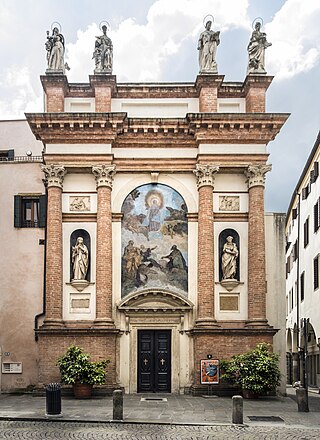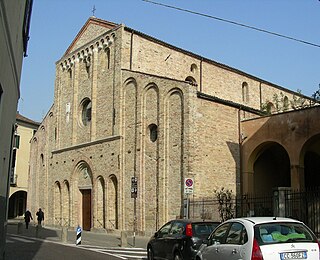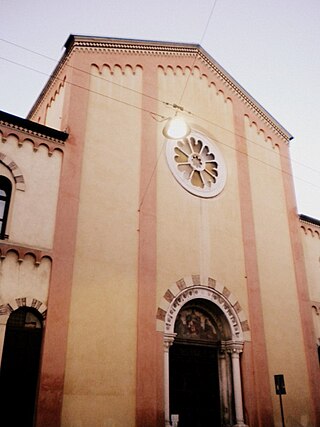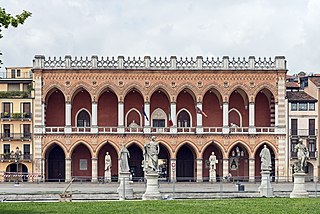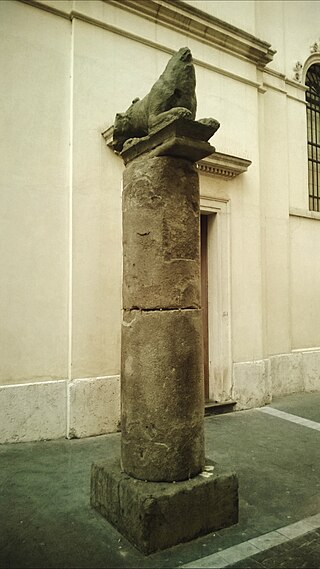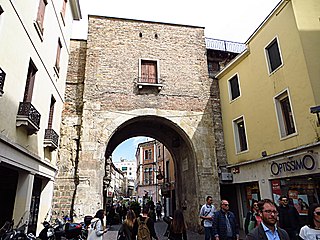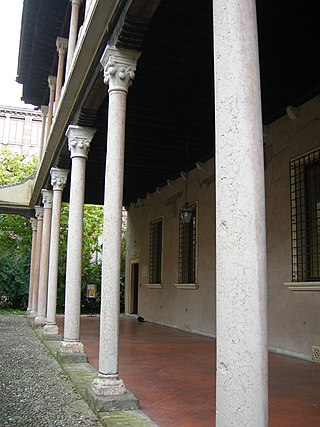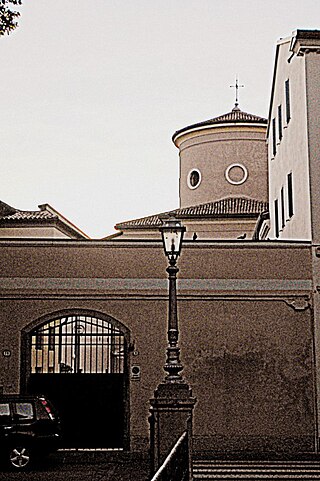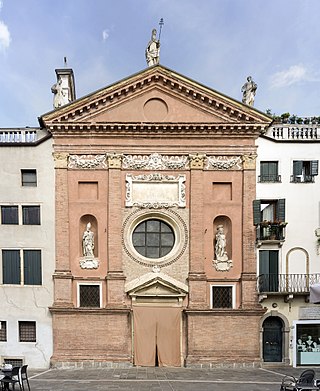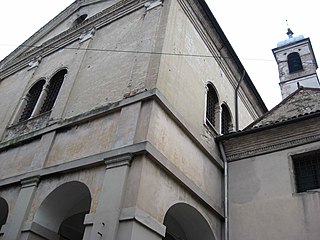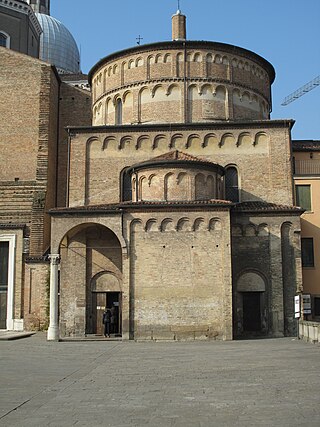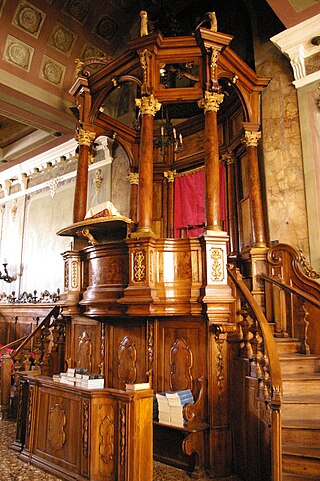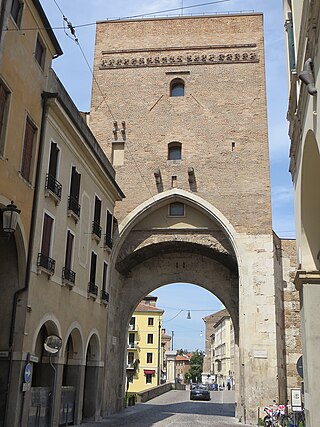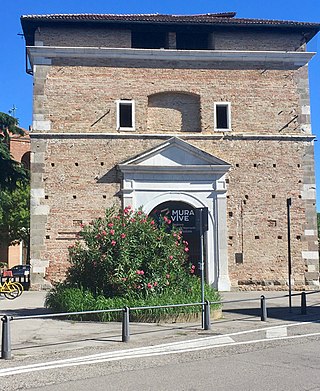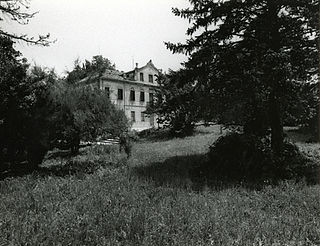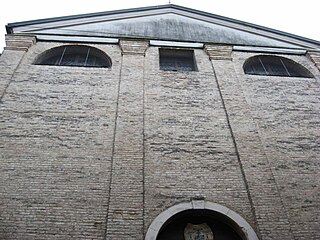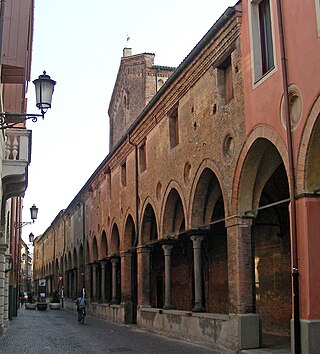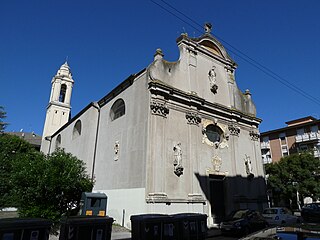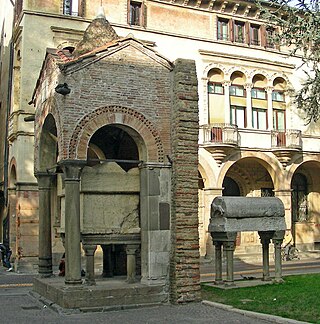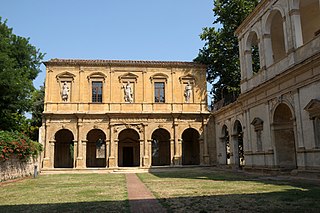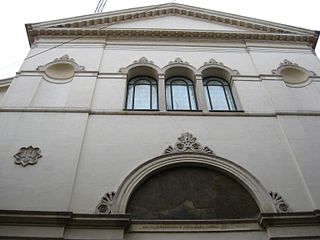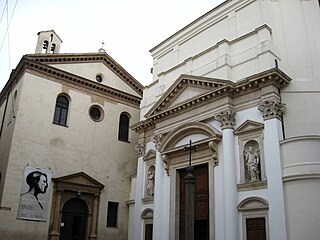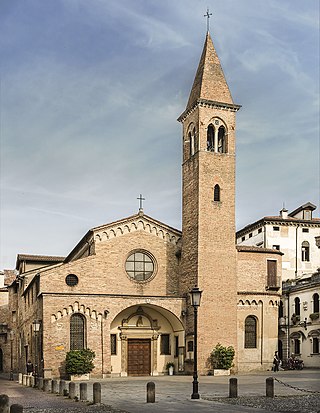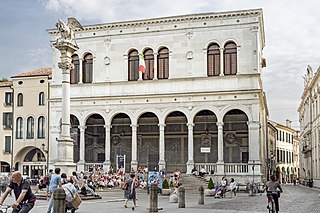55 Sights in Padua, Italy (with Map and Images)
Legend
Premium Sights
Book tickets, guided tours and activities in Padua.
Guided Free Walking Tours
Book free guided walking tours in Padua.
Welcome to your journey through the most beautiful sights in Padua, Italy! Whether you want to discover the city's historical treasures or experience its modern highlights, you'll find everything your heart desires here. Be inspired by our selection and plan your unforgettable adventure in Padua. Dive into the diversity of this fascinating city and discover everything it has to offer.
Sightseeing Tours in PaduaActivities in PaduaTorre dell'Orologio is a clock tower located in the Piazza (Plaza) Dei Signori and positioned between the Palazzo (Palace) del Capitanio and the Palazzo dei Camerlenghi in Padua, or Padova, Italy. It is also referred to as the astronomical clock of Padua.
Villa Molin is a patrician residence in the neighborhood of Mandria, in Ponte della Cagna, south of Padua, in the Veneto region of northern Italy. It was designed for Nicolò Molin, a Venetian noble, by Vincenzo Scamozzi and completed in 1597. It faces Mandriola, on the opposite side of the Canale di Battaglia. The original agricultural setting of the villa, composed of pasture and orchards, has given way to a residential dormitory community of Padua.
The Pedrocchi Café is a café founded in the 18th century in central Padua, Italy. It has architectural prominence because its rooms were decorated in diverse styles, arranged in an eclectic ensemble by the architect Giuseppe Jappelli. The café has historical prominence because of its role in the 1848 riots against the Habsburg monarchy, as well as for being an attraction for artists over the last century from the French novelist Stendhal to Lord Byron to the Italian writer Dario Fo.
The Palazzo della Ragione is a medieval market hall, town hall and palace of justice building in Padua, in the Veneto region of Italy. The upper floor was dedicated to the town and justice administration; while the ground floor still hosts the historical covered market of the city. The palace separates the two market squares of Piazza delle Erbe from Piazza dei Frutti. It is popularly called "il Salone" . It is part of the UNESCO World Heritage Site of Padua's 14th-century fresco cycles.
The Church of the Eremitani, or Church of the Hermits, is a former-Augustinian, 13th-century Gothic-style church in Padua, region of the Veneto, Italy. It is also now notable for being adjacent to the Cappella Scrovegni with Giotto frescoes and the municipal archeology and art gallery: the Musei Civici agli Eremitani, which is housed in the former Augustinian monastery located to the left of the entrance.
6. Scrovegni Chapel
The Scrovegni Chapel, also known as the Arena Chapel, is a small church, adjacent to the Augustinian monastery, the Monastero degli Eremitani in Padua, region of Veneto, Italy. The chapel and monastery are now part of the complex of the Musei Civici di Padova.
7. San Leopoldo Mandić
Leopold Mandić [Mandich], OFMCap was a Croatian Capuchin friar and Catholic priest, who suffered from disabilities that would plague his speech and stature. He developed tremendous spiritual strength in spite of his disabilities and became extremely popular in his ministry as a confessor, often spending 12–15 hours in the confessional.
8. Abbey of Santa Giustina
The Abbey of Santa Giustina is a 10th-century Benedictine abbey complex located in front of the Prato della Valle in central Padua, region of Veneto, Italy. Adjacent to the former monastery is the basilica church of Santa Giustina, initially built in the 6th century, but whose present form derives from a 17th-century reconstruction.
9. Orto Botanico di Padova
The Orto Botanico di Padova is a botanical garden in Padua, in the northeastern part of Italy. Founded in June 1545 by the Venetian Republic, it is the world's oldest academic botanical garden that is still in its original location. The garden – operated by the University of Padua and owned by the Italian government – encompasses roughly 22,000 square meters (240,000 sq ft), and is known for its special collections and historical design.
10. Placido Cortese
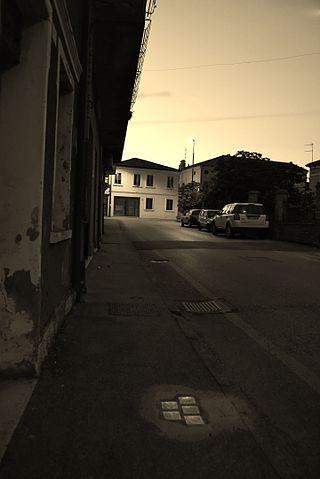
The list of stumbling stones in Veneto contains the list of stumbling stones placed in Veneto. They commemorate the Venetian victims of the persecution of the Nazi-Fascist regime as part of an initiative by the German artist Gunter Demnig extended to the whole of Europe. The first stumbling stone in Veneto was placed in Venice on January 12, 2014 in memory of the deportees from the Jewish Rest Home in Cannaregio 2874.
11. Museo della Fisica Giovanni Poleni
The Museum of the History of Physics is located at the Department of Physics and Astronomy "Galileo Galilei" of the University of Padua. The museum preserves a collection of ancient scientific instruments closely linked to the scientific past of the University of Padua, which since the eighteenth century has been characterized by innovation and experimental vocation.
Wikipedia: Museo di storia della fisica dell'Università di Padova (IT), Website
12. Monumento equestre al Gattamelata
The Equestrian Statue of Gattamelata is an Italian Renaissance sculpture by Donatello, dating from 1453, today in the Piazza del Santo in Padua, Italy. It portrays the condottiere Erasmo da Narni, known as "Gattamelata", who served mostly under the Republic of Venice, which ruled Padua at the time. It is the first full-size equestrian statue of the Italian Renaissance.
13. ex-Convento di Sant'Orsola
The convent of Sant'Orsola di Padova was a religious building of medieval origin, founded by Enrico Scrovegni, now used as a private residence, located along the Roncajette river in the district of San Gregorio Magno.
14. Duomo di Padova
Padua Cathedral, or Basilica Cathedral of Saint Mary of the Assumption, is a Catholic church and minor basilica located on the east end of Piazza Duomo, adjacent to the bishop's palace in Padua, Veneto, Italy.
15. Chiesa di San Benedetto Vecchio
The church of San Benedetto Abate called for centuries the church of San Benedetto Vecchio is a building of medieval origin that overlooks Riviera San Benedetto, towards the Bacchiglione, in Padua. The building was built with the adjoining Benedictine monastery at the behest of Blessed Girolamo Forzatè.
16. Esapolis
Esapolis is an insectarium located in Padua, created by a collaboration between the Province of Padua and Butterfly Arc, a private initiative. Occupying an area of 2500 m2, it is the largest exhibition facility in Italy dedicated to this type of animal.
17. Chiesa di Sant'Antonio di Vienna
The church of Sant'Antonio Abate, known as the church of Sant'Antonio di Vienna, is a medieval religious building that stands in Contrà Savonarola, in Padua. The building is part of the Colegio San Marco, a structure adapted in 1771 to accommodate university students, and previously used as a monastery first by the Canons of St. Anthony of Vienne and later by the Rhenish Canons.
18. Tempio nazionale dell'internato ignoto
The National Temple of the Unknown Internee is a shrine and church in the Terranegra district of Padua, built in memory of the internees in the Nazi concentration camps during the Second World War. Inside the complex there is also the Museum of Internment dedicated to the entire historical story of internment during the war.
19. Castello Carrarese
The Castelvecchio, formerly called Castello della Torlonga but today also known as Castello di Ezzelino, or Castello Carrarese or even Castello di Padova, is a fortification of early medieval origin located on the bifurcation of the Bacchiglione where it is divided into Tronco Maestro and Naviglio interno. It owes its current characteristics to the lordship of the Da Carrara. During the nineteenth and twentieth centuries it was largely used as a state prison while the keep, the Torlonga, has been the city observatory since the eighteenth century.
20. Chiesa di Ognissanti
The church of Ognissanti is a religious building of early medieval origin that stands in contrà Ognissanti, now via Ognissanti, in Padua. The church, built near a xenodochio, until the Napoleonic suppressions was part of a Benedictine monastic complex. Vincenzo Scamozzi worked on the restoration of the building in the sixteenth century.
21. Chiesa di San Fermo
The church of Saints Fermo and Rustico, better known as the church of San Fermo, is a religious building of early medieval origin that overlooks Via San Fermo in Padua. It is to be counted among the oldest in the city. Formerly a parish, it became subject to the parish of San Leonardo for a period; now it is a subsidiary church to the Basilica del Carmine, officiated on holy days of obligation by the Sri Lankan Catholic community. It is currently devoid of all works and furnishings.
22. Tempio della Pace
The Church of the Most Holy Name of Jesus, better known as the Temple of Peace, is a Catholic place of worship and shrine in Padua, located in Via Niccolò Tommaseo, not far from the railway station; it is the seat of the parish of the same name, belonging to the Cathedral vicariate of the Diocese of Padua.
23. Chiesa della Beata Vergine Maria Immacolata
The church of the Immaculate Madonna also known as the church of Santa Maria Iconia, is a religious building that stands in Borgo Portello, now Via Belzoni in Padua. The current building was built in the fifties of the nineteenth century on a previous medieval one, dedicated to Santa Maria Iconia which was first of the Knights Templar, then commandery of the Knights of Malta who rebuilt it, with San Giovanni Battista delle Navi, until the Napoleonic ecclesiastical suppressions. Inside is the body of Blessed Antonio Manzoni known as "the Pilgrim".
24. Cappella Ovetari
The Ovetari Chapel is a chapel in the right arm of the Church of the Eremitani in Padua. It is renowned for a Renaissance fresco cycle by Andrea Mantegna and others, painted from 1448 to 1457. The cycle was destroyed by an Allied bombing in 1944: today, only two scenes and a few fragments survive, which have been restored in 2006. They are, however, known from black-and-white photographs.
25. Chiesa delle Dimesse
The church of Santa Maria Assunta delle Dimesse better known as the church of the Dimesse is a seventeenth-eighteenth century religious building that stands in Contrà delle Dimesse in Padua. The church is part of the College of the Noble Dimesse founded in 1615.
26. Scuola della Carità
The School of Charity of Padua is a medieval building that since the first decades of the fifteenth century was the headquarters of the Confraternity of Charity, a secular congregation dedicated to devotional and welfare activities, up to the beginning of the nineteenth century. The complex is used for cultural activities.
27. Chiesa di Santa Maria dei Servi
Santa Maria dei Servi, or simply known as the Chiesa dei Servi, or more fully as the Church of the Nativity of the Servants of the Blessed Virgin Mary, is a 14th-century, Roman Catholic church that faces the Via Roma in Padua, region of the Veneto, Italy. This is a parish church in the vicariate of the Cathedral Basilica of Santa Maria Assunta governed by the Servite Order. The church contains outstanding works of art including a wooden crucifix by Donatello.
28. Cappella di San Giacomo (Altichiero)
The chapel of St. James or St. Felix is located in the basilica of St. Anthony in Padua. Initially it was dedicated to St. James, from whom it took its name: in 1503 the relics of Pope Felix II were moved here and therefore the chapel was dedicated to him.
29. Chiesa di San Canziano
The church of San Canziano is a religious building of medieval origin that stands in the center of Padua, towards Piazza delle Erbe. It is currently a rectory entrusted to the Legionary priests of Christ. At this time, it is officially the only church in the diocese of Padua where Mass is celebrated on Sundays and holy days of obligation, in the traditional form of the Roman rite.
30. Santa Sofia
Santa Sofia is the oldest Roman Catholic church structure in the city of Padua, region of Veneto, Italy. It was built in the 10th century on the site of a presumed Mithraeum. A grant was made to bishop Sinibaldo of this church in 1123, which had already been in construction. The Romanesque stone and brick facade was constructed from 1106 to 1127, but the semicircular apse may date from earlier. The interior is now relatively bare.
31. Chiesa del Beato Antonio Pellegrino
The church of Blessed Antonio Pellegrino is a religious building of Renaissance origin that stands in contrà san Giacomo, now via Beato Pellegrino in Padua. The church, formerly owned by the Benedictine nuns, preserved the remains of Blessed Antonio Manzoni known as "the Pilgrim" placed today in the church of the Immaculate Conception. Now it is a church officiated by the Romanian community of the Roman rite. The monastic complex of which it was part, after being used as a hospital, is now largely occupied by the University of Padua.
32. Loggia Amulea
The Loggia Amulea is a neo-Gothic style palace located in Prato della Valle, the largest square in Padua. The building was the headquarters of the Padua fire brigade from 1906 to 1989; later it houses some municipal offices. The front of the building is characterized by an elegant loggia; In the room adjacent to the large balcony, civil weddings are sometimes celebrated.
33. La Gatta
The cat of Sant'Andrea, popularly called the cat, is a monument of medieval origin located in the small churchyard of the church of Sant'Andrea in Padua. The monument, composed of a stone sculpture depicting a lion placed on an Roman age column, was shot down on 23 September 2013 by a means of transport in maneuver and relocated on March 19, 2015.
34. Porta Altinate
The Porta Altinate or Porta di Ponte Altinà was one of the four "regales" entrances that opened onto the municipal walls of Padua. The gate rises on the first pier of the Roman Ponte Altinate - now not visible - which crosses the Naviglio Interno buried in the sixties of the last century to make room for the Via Riviera dei Ponti Romani. The gate and the bridge - as well as the following district - take their name from Altino, the city towards which the road to which they gave access was directed. The gate is a popular pedestrian walkway to Piazza dei Noli, now Garibaldi.
35. Loggia della Reggia dei Carraresi
The Loggia dei Carraresi is a historic building in Padua located in Via Accademia. It is the last surviving part of the Carrarese Palace, the great residence of the Da Carrara family, lords of Padua. Since 2021 it has been included by UNESCO among the World Heritage Sites on the site of the fourteenth-century fresco cycles of Padua.
36. Chiesa di San Benedetto Novello
The church of San Benedetto Novello is a religious building of medieval origin that stands towards Riviera San Benedetto, in Padua. It was built with the adjoining monastery to house the male Benedictine community that had emerged from the "double" monastery of San Benedetto Vecchio, although it later passed to the Olivetans. Today, the church and monastery dedicated to the Visitation of St. Mary belong to a community of cloistered nuns.
37. Chiesa di San Clemente
San Clemente, or St Clement, is a Baroque-style Roman Catholic church that overlooks the Piazza dei Signori in Padua, Italy. It is currently a dependent of the Cathedral Basilica of Santa Maria Assunta.
38. Chiesa di San Pietro
The church of San Pietro Apostolo is a religious building that overlooks Contrà San Pietro, now Via San Pietro in Padua. The church already existed in the fourth century, although it underwent a reconstruction at the end of the eleventh century. Until 1809 it was the parish and church of the Benedictine nuns who had the title of canonesses in respect of a royal privilege of the ninth century. On 22 April 866 Louis II united it to the bishopric of Padua. The church is an extraordinary complex in which building and decorative phenomena ranging from the Middle Ages to the neo-Gothic period overlap. Today it is a rectory subject to the Cathedral.
39. Battistero
The Padua Baptistery, dedicated to St. John the Baptist, is a baptistery on the Piazza del Duomo next to the cathedral in Padua, Italy. Preserved inside is one of the most important fresco cycles of the 14th century, a masterpiece by Giusto de' Menabuoi.
40. Sinagoga
The Padua Synagogue, also called the Great Italian Synagogue in Padua, is an Orthodox Jewish congregation and synagogue, that is located at San Martino e Solferino 9, in Padua, Veneto, Italy. Completed in 1548, it is the only synagogue still in use of the several that flourished in the university town of Padua from the Renaissance through World War II.
41. Porta di Ponte Molino
The Porta Molino or Porta dei Molini was the main of the four royal accesses that opened into the medieval walls of Padua. Facing north, it rises at the end of the Roman Ponte Molino which crosses the branch of the Bacchiglione called Tronco Maestro where until 1884 thirty-three wheels of as many mills mounted on boats worked, from which the gate and the bridge take their name.
42. Porta Liviana
The Porta Liviana was one of the main gateways to the sixteenth-century walls of Padua. Also known as Porta Ponte Corvo, from the name of the place where it stands, it is called Liviana in honor of Bartolomeo d'Alviano, the Renaissance leader and strategist who designed the defenses of Padua.
43. Museo di Storia della Medicina in Padova (MUSME)
.jpg)
The Museum of the History of Medicine of Padua (MUSME) is a museum open to the public since 2015 and located inside the ancient Hospital of San Francesco Grande, next to the church of San Francesco Grande in Padua. The museum, through its interactive tools and collections, illustrates to the public of all ages and education the evolution of medical science over the centuries, with particular reference to the history of medicine at the University of Padua, one of the most important medical schools in the West.
44. Villa Giusti
Villa Giusti or Villa Giusti del Giardino is a villa in Mandria, outside of Padua in Northern Italy. It is notable for being the site of the signing of the Armistice of Villa Giusti that ended the First World War on the Italian Front.
45. San Tomaso Becket
The church of San Tomaso Cantuariense, also known as the church of San Tomaso or Tommaso is a religious building that overlooks the "strà di San Tomaso" now via San Tomaso in the contrà di Castel Vecchio in Padua. The building, named after Thomas Becket, was once a parish entrusted to the Filipino Fathers and is now a parish run by secular clergy belonging to the vicariate of the Cathedral. Inside the church there is an important collection of relics including the heart of St. Philip Neri and a portrait of him who sweated 27 times in 1632. The rich interior furnishings include works by seventeenth- and eighteenth-century authors such as Pietro Liberi, Francesco Maffei, Onofrio Gabrieli.
46. Chiesa di San Francesco
The church dedicated to saint Francis of Assisi, known for centuries as San Francesco Grande is a religious building on the Via San Francesco, previously overlooks the Contra porteghi high in Padua, Italy. Through the efforts of Baldo de Bonafarii and Sibilla de Cetto, the convent of the Friars Minor and the Hospital of Saint Francis, Major, operated until 1798.
47. Chiesa di Santa Maria delle Grazie
The church of Santa Maria delle Grazie is a sixteenth-century building of worship located in Padua in Via Luigi Configliachi, near the intersection with Via Cavalletto, between the area of Vanzo and the ancient village of Santa Croce.
48. Tomba di Antenore
The Tomb of Antenor, also called the Sepulchre of Antenore, is a 13th-century monument created to honor an unearthed ancient sarcophagus, claimed to be that of the Trojan warrior and counselor Antenor, the legendary founder of Padua; it is located in Piazza Antenore, in Padua, region of Veneto, Italy.
49. Palazzo Zabarella
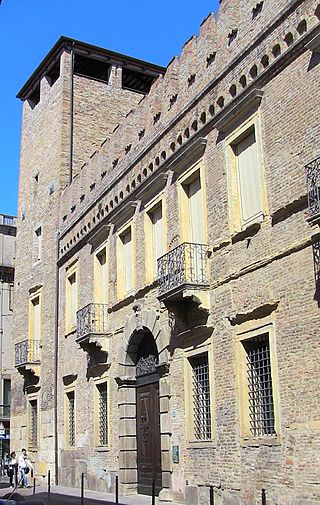
The Palazzo Zabarella is a medieval, fortress-like palace with a crenellated roof-line, and corner tower, located on Via San Francesco 27 in the center of Padua, Italy. The building now houses the Fondazione Bano, and serves as a locale for cultural events and exhibition.
50. Loggia e Odeo Cornaro
The Loggia and Odeo Cornaro are two Renaissance buildings, built in the 16th century for the humanist Alvise Cornaro and hosting theater and music performances, locate in via Cesarotti 37 in Padua, region of Veneto, Italy. They are now part of the city's museums.
51. Chiesa di Sant'Andrea
Sant'Andrea is a Roman Catholic church located on Via Sant'Andrea in Padua, region of Veneto, Italy. Founded by the 12th-century as a parish church, the present church was completed in the late 19th century.
52. Palazzo Zuckermann
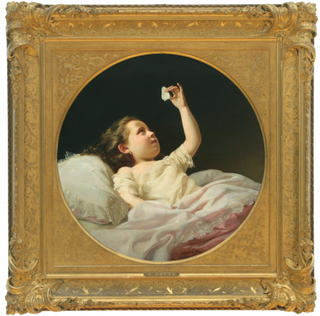
The Palazzo Zuckermann is a palace located on corso Garibaldi in Padua, Italy. The building now houses the collections of the Museo di arti applicate e decorative on the first floor and the Museo Bottacin on the second floor; these collections form part of the Civic Museum of Padua. It stands across the street from the Cappella degli Scrovegni and the Museo agli Eremitani; the latter houses the main art gallery of the civic Museum of Padua.
53. Oratorio San Rocco
The Oratory of San Rocco is a Renaissance style, Roman Catholic church located in the city center of Padua, region of Veneto, Italy. It arises adjacent to the church of Santa Lucia, and is notable for its collection of frescoes.
54. Chiesa di San Nicolò
San Nicolò is a Romanesque and Gothic-style, Roman Catholic church in Padua, region of Veneto, Italy. It stands in front of a homonymous piazza, and is adjacent to the Palazzo Meschini and Palazzo Brunelli-Bonetti.
55. Loggia della Gran Guardia
The Loggia del Consiglio, also known as the Loggia della Gran Guardia, is a Renaissance building that overlooks Piazza dei Signori in Padua. It was built starting in 1491 as the seat of the Great Council. It was built on a project presented by Annibale Maggi and the building was completed in 1536, according to some studies, under the direction of Giovanni Maria Falconetto. The upper room was frescoed in 1667 by Pier Antonio Torri. During the Austrian domination it became the seat of the "Gran Guardia", the military command of the city.
Share
How likely are you to recommend us?
Disclaimer Please be aware of your surroundings and do not enter private property. We are not liable for any damages that occur during the tours.
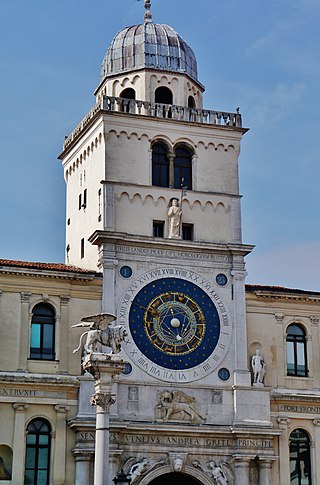
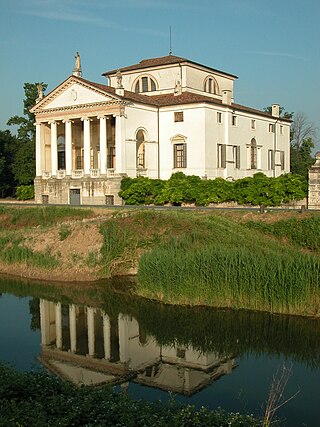
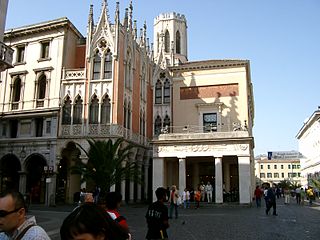
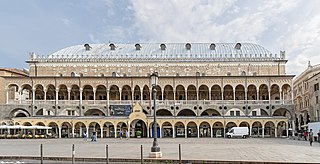
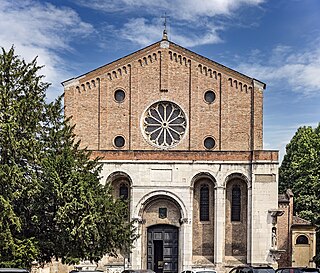
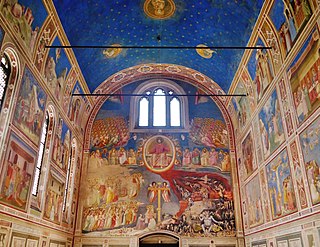
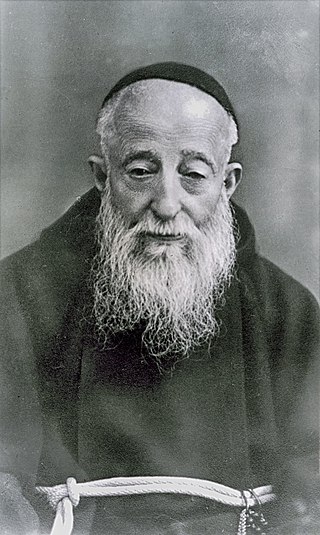
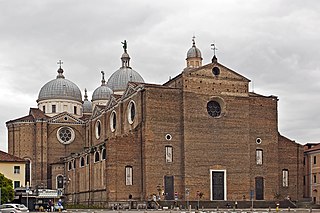
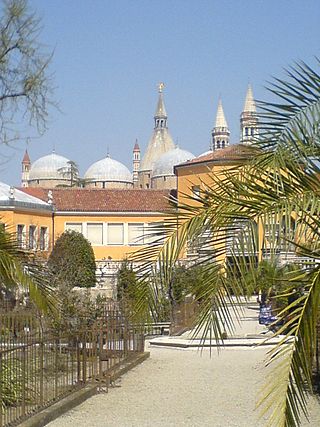
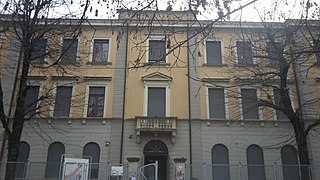
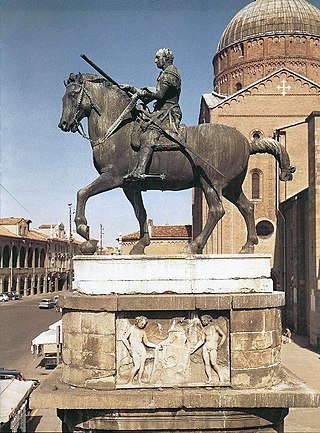
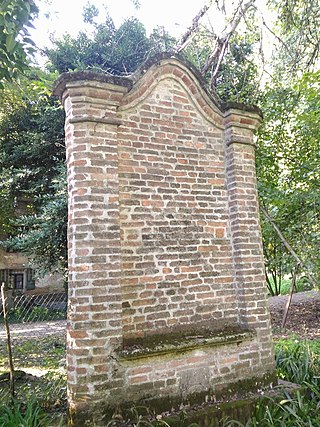
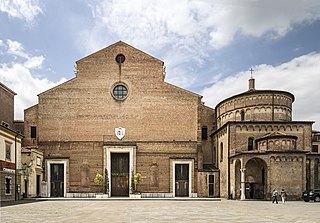

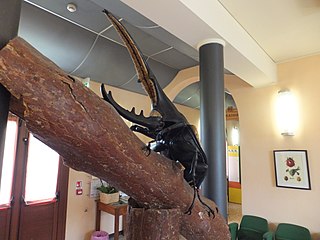
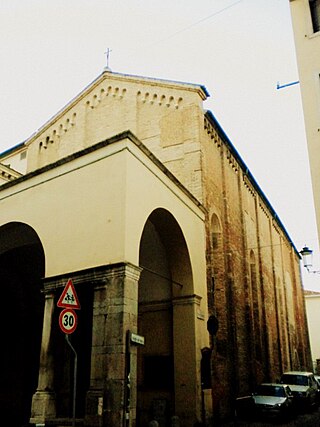

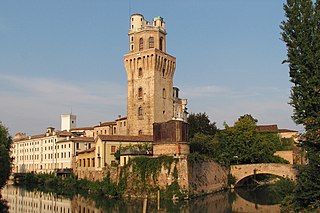
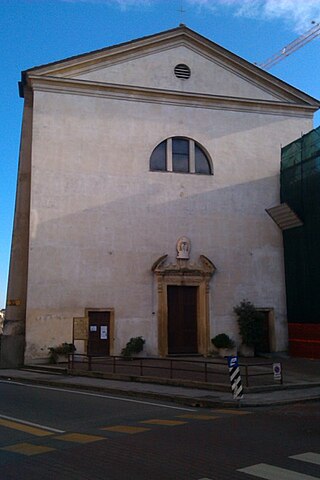

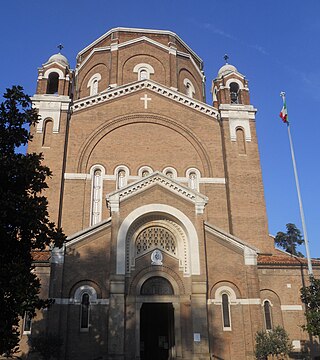
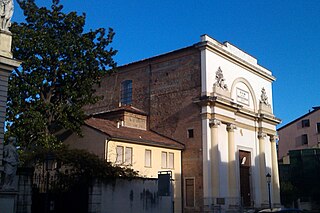
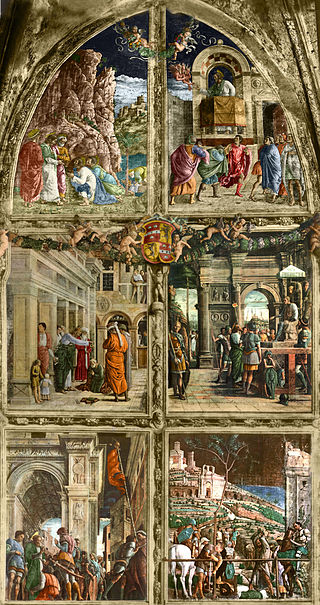

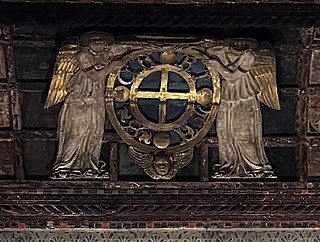
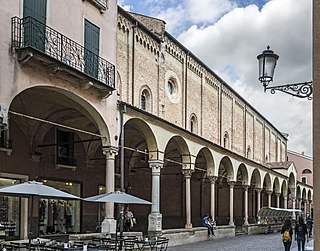
.jpg)
